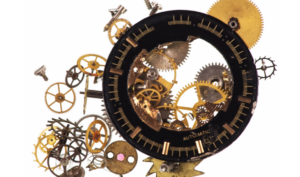
Why Is Great Leadership Like a Fine Watch?
A fine mechanical watch is exquisite in its own right. But if you look closer, you’ll see more than just a special timepiece. It is

A fine mechanical watch is exquisite in its own right. But if you look closer, you’ll see more than just a special timepiece. It is
Sometimes when we focus so much of our energy on workplace efficiency, we end up making the problem worse. I once worked at a marketing

Mobile recruiting is revolutionizing HR. Now it’s time for mobile hiring to step in where the mobile candidate experience leaves off…

How are employers pushing the “gamification” envelope to improve hiring and management decisions? See highlights and collected resources from a week of playful #TChat events

When designing an organizational workspace, it’s essential to think from the “inside” out. Why? Thoughts from an employee recognition expert…

How does workspace design affect workforce engagement and organizational performance? See what our talent-minded “world of work” community says…

What role does workspace design play in driving workforce engagement, productivity and performance? That’s the focus this week in the TalentCulture community…
Organizational analysis – lessons from a human perspective. What a personal medical crisis can teach about organizational culture, performance, and brand humanization…